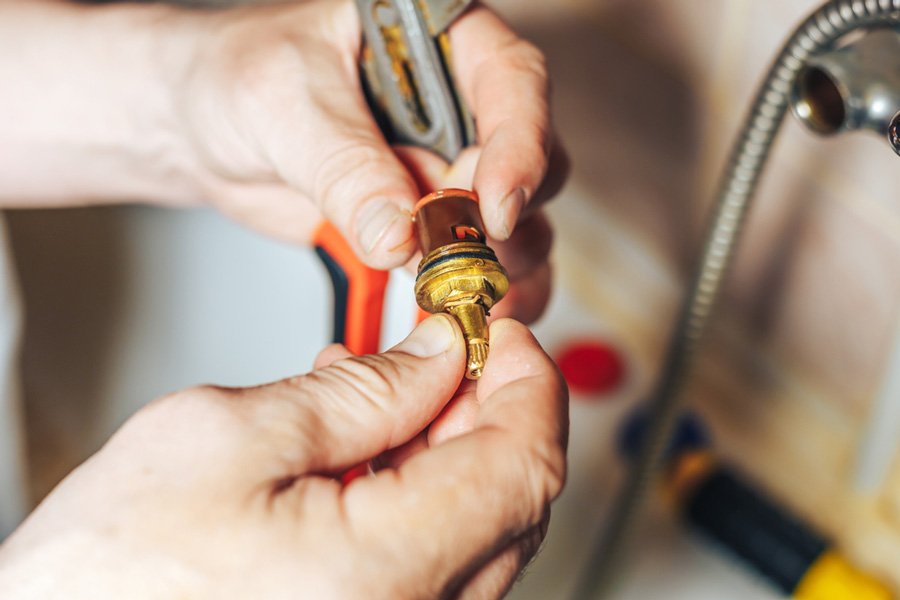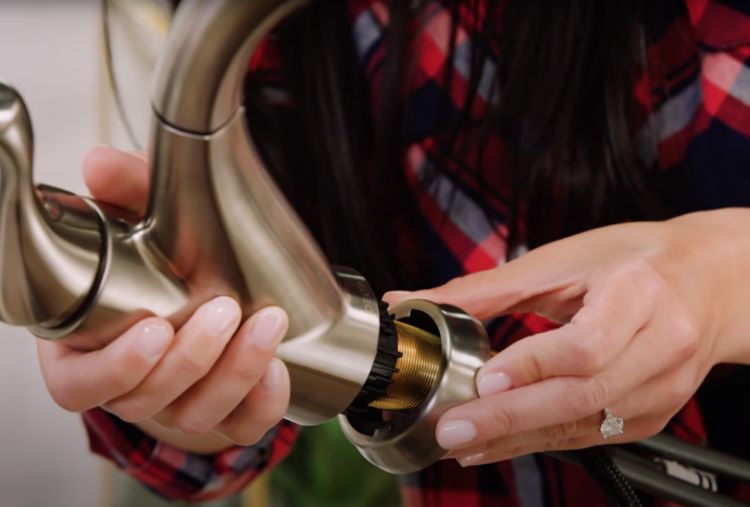Every person may have their private ideas when it comes to Why Are My Faucets Dripping (And Can I Fix It Myself)?.

Dripping faucets may seem like a minor trouble, yet their impact exceeds simply the annoyance of the sound. From drainage to sustaining unnecessary monetary costs and health dangers, overlooking a trickling faucet can result in different repercussions. In this post, we'll explore why it's important to address this common household concern promptly and effectively.
Wastefulness of Water
Ecological Impact
Trickling taps contribute significantly to water wastage. According to the Environmental Protection Agency (EPA), a solitary tap leaking at one drip per second can throw away more than 3,000 gallons of water each year. This not only stress water resources however additionally influences environments and wildlife dependent on them.
Step-by-Step Overview to Fixing a Dripping Tap
Tools Needed
Prior to attempting to deal with a dripping faucet, collect the necessary devices, including a flexible wrench, screwdrivers, replacement components (such as washing machines or cartridges), and plumber's tape.
Common Faucet Issues and Their Solutions
Determine the sort of tap and the specific issue triggering the drip. Usual problems consist of damaged washers, rusty shutoff seats, or defective O-rings. Refer to maker guidelines or on-line tutorials for detailed advice on repairs.
Financial Costs
Increased Water Bills
Past the ecological effect, leaking faucets can pump up water bills substantially. The accumulated wastage with time translates right into higher utility expenditures, which might have been prevented with prompt repair work.
Potential Home Damages
Furthermore, prolonged leaking can result in harm to fixtures and surface areas surrounding the faucet. Water buildup can cause discoloration, deterioration, and also architectural concerns if left neglected, causing added repair service expenses.
Health Problems
Mold And Mildew and Mold Growth
The constant existence of dampness from a dripping faucet creates an excellent environment for mold and mold development. These fungi not just endanger interior air quality however likewise present wellness threats, particularly for individuals with respiratory problems or allergies.
Waterborne Diseases
Stagnant water in dripping taps can become a breeding ground for germs and other pathogens, raising the risk of waterborne diseases. Contaminants such as Legionella germs flourish in stationary water, potentially resulting in major illnesses when consumed or breathed in.
DIY vs. Professional Fixing
Benefits and drawbacks of DIY Repair
While some might attempt to deal with a leaking faucet themselves, do it yourself repairs feature their own collection of challenges. Without correct knowledge and devices, do it yourself attempts can aggravate the issue or cause incomplete repair work, lengthening the problem.
Advantages of Hiring a Specialist Plumber
Working with a professional plumber makes sure that the underlying source of the dripping faucet is dealt with successfully. Plumbers possess the competence and tools to detect and fix tap concerns successfully, saving time and decreasing the danger of additional damages.
Ecological Duty
Specific Payment to Preservation
Taking obligation for dealing with dripping taps aligns with wider efforts toward water preservation and environmental sustainability. Every person's actions jointly make a significant influence on preserving valuable resources.
Sustainable Living Practices
By focusing on prompt repair services and embracing water-saving habits, people contribute to lasting living methods that profit both present and future generations.
Safety nets
Routine Upkeep Tips
To avoid trickling faucets, execute routine maintenance such as cleansing aerators, examining for leakages, and changing damaged parts quickly. Furthermore, take into consideration setting up water-saving gadgets or updating to much more reliable components.
Relevance of Prompt Services
Resolving leaking taps as quickly as they're noticed avoids additional water waste and possible damages, inevitably conserving both water and cash in the future.
Effect On Building Worth
Assumption of Well-Maintained Residential Property
Maintaining a residential property in good condition, consisting of dealing with maintenance concerns like dripping faucets, boosts its perceived value and desirability amongst potential customers or tenants.
Impact on Resale Value
Qualities with properly maintained plumbing components, including taps, command greater resale values in the property market. Dealing with dripping faucets can contribute to a favorable impression throughout home inspections and settlements.
Verdict
Attending to a trickling faucet exceeds plain benefit; it's a crucial step toward saving water, reducing financial expenses, and securing health and residential property. Whether via DIY repair work or specialist support, taking action to deal with leaking taps is a small yet impactful means to promote accountable stewardship of sources and contribute to a much healthier, more sustainable future.
How to Fix a Leaky Faucet: Step-by-Step Repair Guide
A leaky faucet may seem like a simple annoyance, but if it's not fixed promptly, that leak could cost hundreds to potentially thousands. From water damage to mold, mildew, and high water bills, even a tiny leak can be catastrophic if left unattended. Damage like this can even affect the overall value of your home, so it's important to take the right approach for leaky faucet repair. You may need the help of a plumber in some cases, but we've got a few tips you can try on how to fix a leaky faucet before calling the pros.
Four Faucet Types
When you're learning how to fix a leaky faucet, the first step is knowing what kind of faucet you're working with! There are four common types.
Cartridge Faucets
Cartridge faucets come in one- or two-handled varieties. In one-handled cartridge faucets, hot and cold water combines in a single cartridge. In the two-handled versions, hot and cold water are controlled separately and mixed in the faucet.
Ball Faucets
Ball faucets have a single lever you push up and down to adjust the pressure and rotate to change the temperature. A slotted metal ball controls the amount of water allowed into the spout.
Compression Washer Faucets
They're the oldest type of faucet, but they're still used in many homes — especially older ones. Compression faucets have two separate handles that, when turned, raise or lower the washer that seals a water valve. This valve stops water from flowing through the faucet when it is turned off.
Disc Faucets
Disc faucets rarely need to be repaired due to their maintenance-free design. The water flow is controlled by two discs — the upper one raises and lowers against a fixed lower disc, creating a watertight seal. If your disc faucet starts leaking, you may need to replace the seals or clean residue buildup from the inlets.
Fixing a Leaky Faucet
Step 1: Turn Off the Water
Whether you're learning how to fix a leaky bathtub faucet or how to fix a leaky kitchen faucet, always turn off the water supply to your working area when you're fixing a leak. The last thing you want is a flood added to your list of things to fix.
Look for the shutoff valves below your sink or around the tub and turn them clockwise to stop the water flow. If your faucet doesn't have shutoff valves, you may need to turn off the water for the whole house. Check to make sure it's off by turning the faucet on. If nothing comes out, you're ready to start the repair.
Step 2: Take Apart the Faucet
How you disassemble your faucet depends on the type of fixture you have. You can use a flathead screwdriver to remove the caps on top of the handle or handles for cartridge and compression faucets. Inside, you should see handle screws. Unscrew these with a screwdriver to remove the handle.
Disc- and ball-style faucets will typically have an inlet screw near the handle, and removing that will reveal the interior of the faucet.
Detach the Valve Stem
For cartridge- and compression-style faucets, you'll see the inner valve stem or cartridge once you remove the faucet handles. If you have a compression faucet, unscrew the brass valve stem. If you have a cartridge faucet, pull out the cartridge. If your cartridge has been in place for a while, it may require some tools or extra force to remove it due to mineral deposits.
Examine and Replace Parts
Once you've removed the parts, check them out to confirm what needs to be replaced. You may see corroded rubber washers, O-rings, stems, or cartridges. On a ball-style faucet, check the seats and springs for damage.
If you need to repair a leaky disc faucet, check the inlet and seals on the lower disc.
Once you determine what parts must be replaced, visit your local hardware store. Bring the damaged parts with you to ensure you can purchase the correct components to replace them.
Clean Valves and Faucet Cavity
If you've removed a stem or cartridge, you may notice mineral buildup in the faucet's threads. Use white vinegar to clean the valve seat by soaking it for a few minutes, then scrub it away with a soft toothbrush and rinse with warm water. You can also clean the interior of the faucet in the same way.
Reassemble the Faucet
Once your faucet is cleaned and the required parts have been replaced, it's time to reassemble it. Put the pieces back together and slowly turn the water supply back on. Doing this slowly is crucial because too much initial water pressure can damage the new hardware you've just installed.
https://homewarranty.firstam.com/blog/how-to-fix-leaky-faucet

Hopefully you enjoyed our section on 4 Common Reasons for a Leaky Faucet. Thank you for finding the time to read our piece of content. In case you enjoyed our blog entry if you please don't forget to pass it around. We enjoy reading our article about Should I Repair or Replace a Leaky Faucet?.